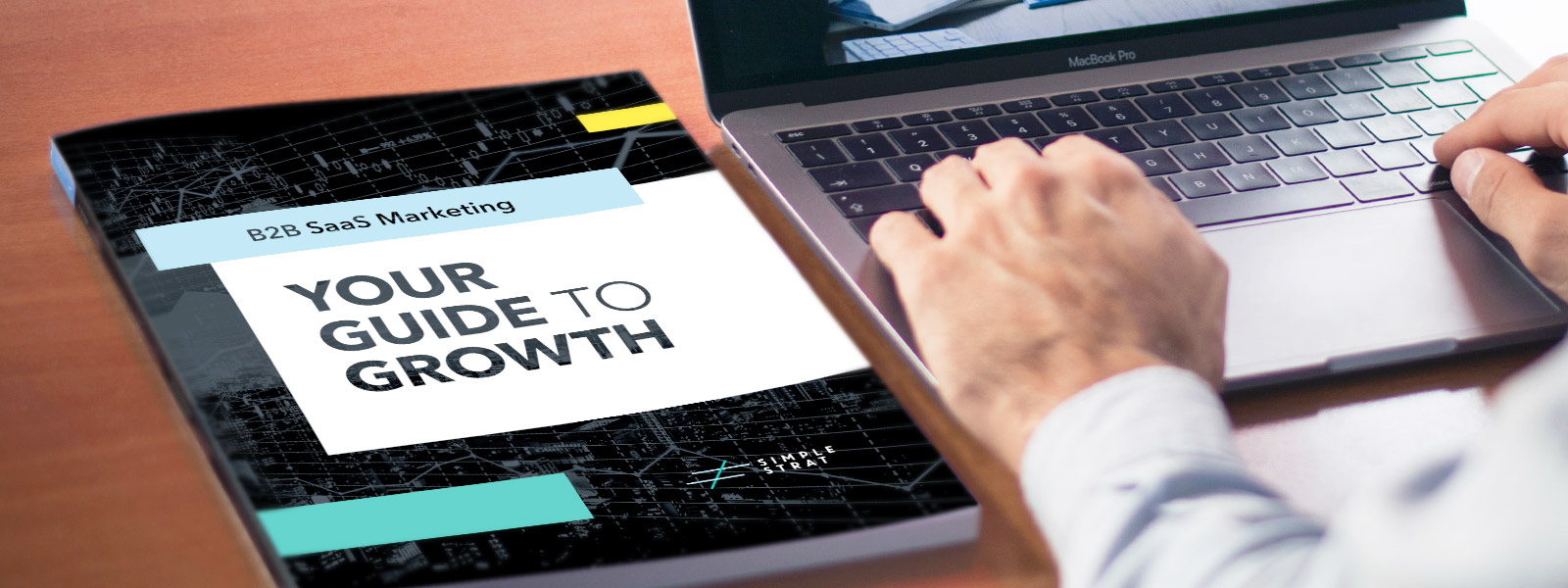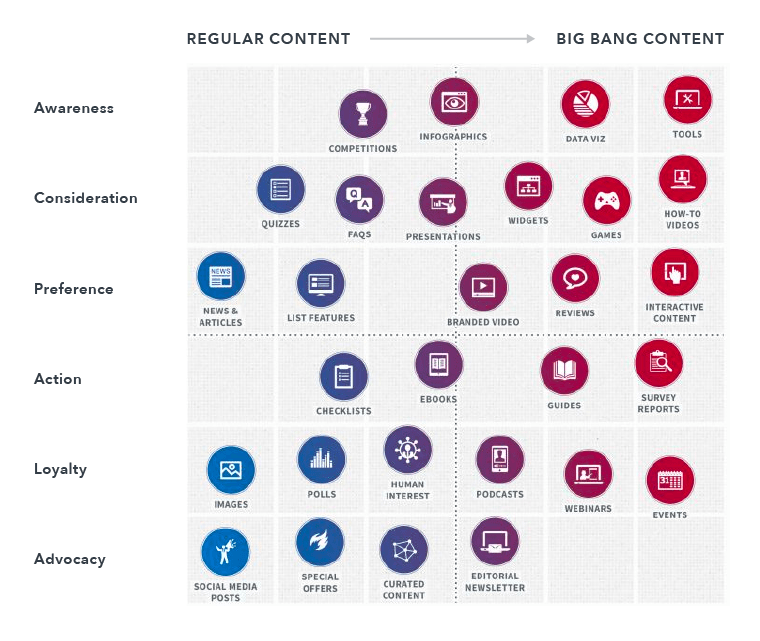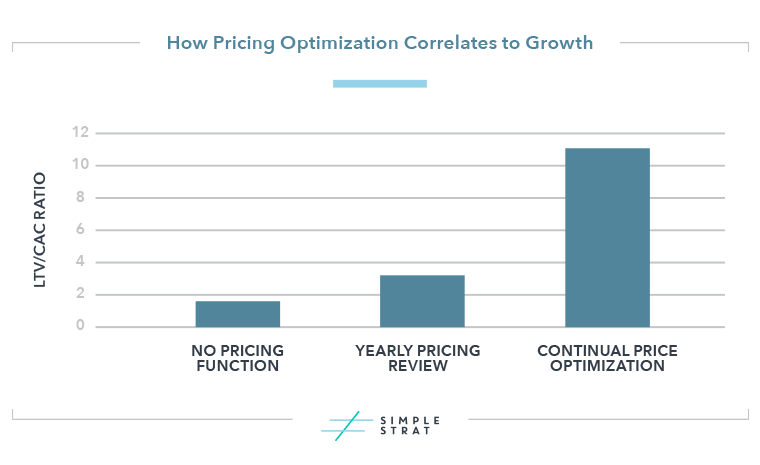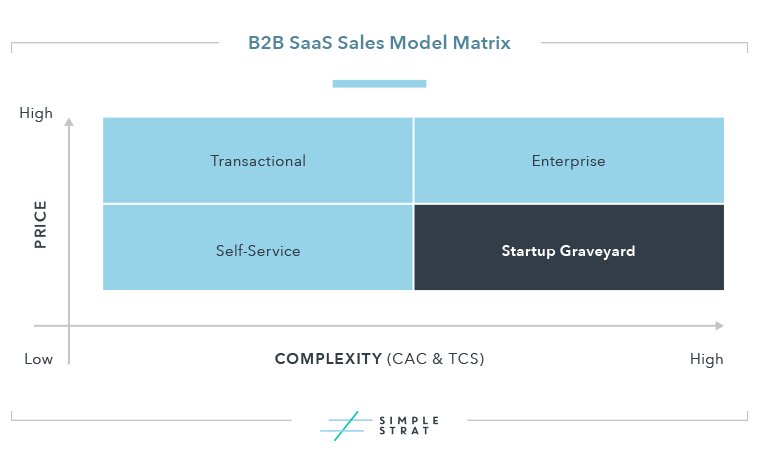The B2B software as a service (SaaS) industry is relatively young — especially compared to other markets. With an entirely unique and rapidly changing business landscape, many SaaS marketers are still figuring out what works best for growing and scaling their company.
But despite the relatively immature marketing environment, B2B SaaS companies aren’t operating in complete darkness. In fact, the amount of data available and our ability to quickly gather large amounts of new data is unprecedented.
This means we’ve learned a lot over the relatively short history of the SaaS industry, including some key differences that affect the way we market our products. These differences include unique unit economics, rapid pace of growth, and an outsized impact of customer success (or lack thereof).
This guide explores several ways B2B SaaS marketers can use these truths to perfect their acquisition, monetization, and retention strategies to scale their business.
What’s Inside
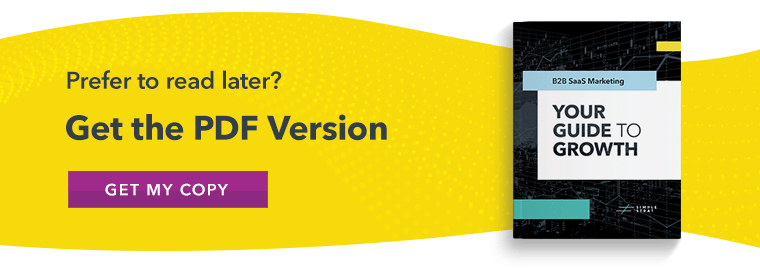
An Overview of the B2B SaaS Marketing Funnel
In the B2B SaaS arena, there is no shortage of competition. The reality is: customers have a growing number of options to meet their needs, and it takes true marketing power to stand out from the crowd.
With a market expected to reach more than $220 billion by 2022, the potential for growth is tremendous. But if you go too slow or can’t get things to click, your chances of success all but disappear.

So how do you increase your chances of being in the group that takes off rather than the one that gets taken out?
We recommend going back to the basics and starting with a thorough examination of your SaaS marketing funnel.
What is the SaaS marketing funnel?
The funnel for SaaS doesn’t look much different than the standard marketing funnel. We like to think of it in three phases:
- Acquisition - Generating awareness and earning new users
- Monetization - Securing and onboarding paying customers
- Retention - Convincing your userbase to stick around
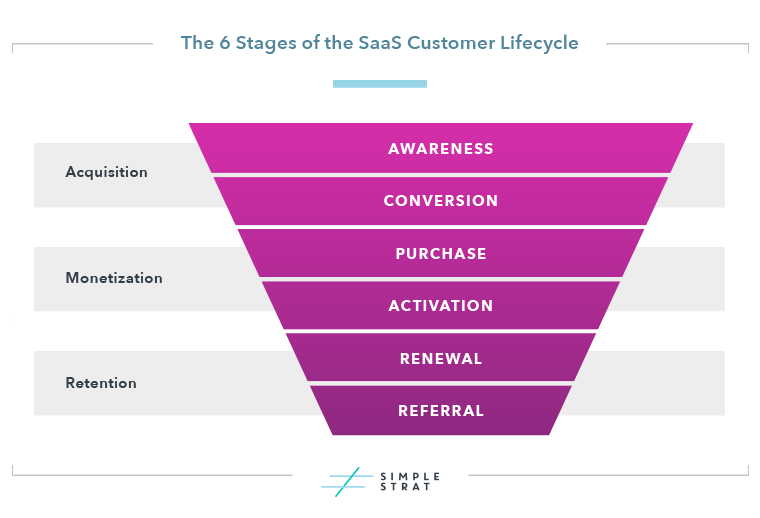
The funnel breaks down further into the customer lifecycle, which shows the process your customers go through to learn about, engage with, and buy from your company. Its length and complexity will vary depending on the complexity and price of your product.
The key to SaaS success is quick and efficient growth, so maximizing the flow of leads and customers through your funnel is essential.
As you optimize your funnel for success, it’s important to remember some of the key differences for B2B SaaS:
- Sales cycles are generally short and simple compared to other industries selling to the same customers, but can run the gamut from low-touch to high-touch.
- Customers often want to try before they buy when it comes to SaaS products, so free trials and customized demos are widely-adopted and effective customer acquisition tactics.
- Onboarding is essential for customer success and is the best way to demonstrate your true value.
- Customer retention is key to your bottom line.
- Great SaaS products with great service can “sell themselves” – but marketing can pull key levers to maximize this potential.
Why focus on the funnel?
While alternate frameworks like the flywheel have gained popularity lately, the funnel remains a tried and true model that makes it easy to plan, track, and execute your marketing strategies and tactics.
At its root, your marketing funnel does more than show the path your customers take to your solution. It can help you track important data at each stage of their journey, allowing you to make adjustments that decrease friction and maximize lead generation and sales.
Understanding your conversion rates, for example, and breaking those numbers down at each stage can help you find the hang-ups in your marketing process. All you need to do is collect the right data and adjust your approach based on what you learn.
What constitutes good funnel conversion rates depends on your customer segment and go-to-market (GTM) approach. But in general, getting more customers through your sales funnel faster will result in higher profits.
One caveat: the criticism for the funnel is that it doesn’t place enough emphasis on the power current customers hold in driving future growth. We agree completely. Though the bottom of the funnel is the smallest, it’s often the most important.
Every marketing funnel’s goal is to convert prospects to long-term paying customers again and again. Let’s talk about how taking a customer-centric approach can help you identify and clear up blockages, moving you closer to success. Following are insights for creating a strong B2B SaaS marketing funnel and tips for driving conversion and maximizing your growth potential, beginning with customer acquisition.
Acquisition: How to Attract B2B SaaS Customers
There are many effective approaches to market B2B SaaS products. But understanding which strategies will work best for you, and how to execute those strategies, requires a deep understanding of your target audiences.
The best way to get the level of understanding you need is by developing buyer personas, based on a combination of data, insights from your sales team, and real conversations with your ideal customers. Though your sales team probably loves them, ideal customer profiles (ICPs) are not enough.
What’s the difference between an ICP and a buyer persona?
An ICP is a high-level description of your target customers based on demographic information. Buyer personas are a detailed description of a specific ideal buyer, based on a combination of demographics and psychographics. Whereas ICPs may be focused on the companies you sell to, buyer personas will always be focused on the individuals who make or influence purchase decisions.
To understand why buyer personas are so valuable to marketers, envision writing a letter to a stranger. First, imagine that the only information you have about the person you’re writing to is what they do for a living, how much money they make, and how old they are. How confident are you that your letter will truly connect with them, inspiring emotion or action.
Now, imagine that you know what that person’s day-to-day life looks like, what their top aspirations are, what keeps them up at night, what kinds of questions they ask, and where they turn for information. Writing your letter is going to be a lot easier, and it’s almost certain to resonate more.
That’s what it’s like to do marketing with thorough, accurate personas. When you know where your ideal customers hang out, it’s easy to pick your primary channels. When you know what they care about, it’s easy to know what messaging to use.
Best marketing channels for B2B SaaS marketing
Your personas should be your guiding light as you build out your marketing plans and strategies. But based on what works well for other B2B SaaS marketers, your strategy will likely include some or all of these popular channels:
Content Marketing
In today’s world, content is a marketing staple. It allows you to communicate your value while building relationships and trust with your prospects and your customers. B2B SaaS companies have a unique advantage with content marketing because of the amount of information and expertise that they possess.
We recommend starting by positioning your content marketing strategy around your conversion funnel. Figure out what kinds of questions your potential customers are asking at each stage, then answer them through your content.
Pro tip: You may want to consider adding a free chat box on your website so your audience can ask you questions directly. This not only helps you engage more personally with leads, but also tells you exactly the kinds of questions people have about your product.
As long as you’re creating high-quality, ‘evergreen’ content that gets at the heart of the issues your target market is facing, you’ll see a high return on a minimal upfront investment. Just make sure you’re not forgetting the high-quality aspect – your goal should be to create content that’s ten times better than the next-best piece of content about that topic.
To help get you started, here’s a list of popular content types for each stage of your marketing funnel:
Search Advertising
Organic search competition is fierce — especially in the world of SaaS. Pay per click (PPC) search campaigns, however, allow you to compete in a different way.
For example, you can use paid search advertising to target competitor keywords and win over new business. There are a few restrictions — like not using a competitor’s trademark in your advertisement — but overall, this strategy is great for redirecting specific target markets to your solution.
In addition to helping you compete, search advertising can drive traffic for the terms that people search when they already intend to buy a product like the one you offer. And, sophisticated marketers can pair up low-cost search terms with their content marketing to drastically improve web traffic and top-of-the-funnel lead generation.
Social Media
Many companies successfully use social media to bring attention to their SaaS company. Just make sure you’re looking at social media as a way to engage with your audience, not simply to broadcast information to them.
SaaS brands winning on social today are creating high-quality content that entertains and informs. But more importantly, they’re having real conversations with users and prospects.
With several analytical tools at your fingertips, social media also gives you a platform to learn what your customers are looking for and which messages resonate most.
Remarketing
Remarketing your SaaS company can be a great way to stay top-of-mind with prospects. These kinds of campaigns display targeted advertisements to customers who have previously visited your website. When setting up your campaigns, make sure you exclude website visitors who have already converted.
Event Marketing
Events are a popular way for many businesses to find leads and make personal connections. Because B2B SaaS offerings are digital, in-person events aren’t necessarily an obvious choice for our marketing plans. But, attending the right ones (or hosting one yourself) can open you up to a world of new opportunities and rewards, allowing you to create the powerful human connections that today’s buyers demand.
Account-Based Marketing (ABM)
A great way to focus your marketing and sales resources if you have a relatively high-value or complex solution is to adopt an account-based strategy. This involves creating a list of target accounts and building a cohesive marketing and sales strategy that targets those accounts.
The key to success is engaging with the right accounts and delivering a message tailored to their current level of engagement with your brand. Before pursuing an account, make sure you have thoroughly assessed their fit and have a clear understanding of whether or not they’re looking to buy.
Partnerships
Creating strategic partnerships can help your company overcome some of the most difficult selling challenges and give you quick access to large audiences. B2B SaaS partnerships can take many forms, from partnering with an industry association on some research to setting up a partner-channel distribution strategy. The possibilities really are endless if you’re creative, open minded, and focused on creating mutually beneficial relationships.
Affiliate Marketing
Does your SaaS offering integrate well with another system? Or, do you get a lot of word-of-mouth business and want to reward others for sharing what they love best about your product or service? An affiliate marketing program might be a great option for you, especially if customers can easily purchase your product online.
Word-of-Mouth & Referrals
Word-of-mouth referrals are the holy grail of any marketing strategy. In fact, gaining customers through referrals can be the biggest driver of B2B SaaS growth.
Driving sales through word of mouth starts with offering a great product and outstanding customer support. But if your company does those things, marketing can step in to increase referrals and other positive conversations about your brand. Popular strategies include programs that incentivize current customers to make referrals, building in ways for users to share interesting information about how they use your product, and staying top of mind for current users by regularly giving them valuable content.
PRO TIPS:
How do you streamline customer acquisition?
- Understand how your customers find you and create more of those kinds of inbound marketing opportunities
- Make it easy for leads who find you to try your software and get their questions answered
- Identify the reason potential customers are leaving your site without signing up and address it
- Create strategic partnerships that complement your service offerings and figure out how to best reach their customer base
- Focus on your content marketing strategy and clearly and succinctly offering solutions to your target market’s biggest problems
Monetization: How Your SaaS Pricing Strategy and Sales Model Impact Growth
Successfully attracting people to your brand is critical, but all the awareness in the world won’t mean anything without an effective sales model and pricing strategy.
If your sales approach is too heavy handed, you may add too much friction and costs. If your price is too low, you may struggle to extract enough value from customers. Those are just two of the many ways to get things wrong. So let’s focus on how to get it right.
SaaS pricing strategy
There are a ton of factors that can go into a SaaS pricing strategy, but it’s helpful to break it into three interrelated components:
- Positioning: How you relate to the competition.
- Packaging: How you group features together and offer them (these are usually tiers, but may be a la carte, usage credits, etc.).
- Value: How much money your product is actually worth.
Positioning has a pretty straightforward effect on your pricing strategy. If you’re positioning your product as a more premium option, you’ll typically want to charge more. If you’re leading with a message of affordability or greater access, you’ll likely want to charge less than some of your competitors.
Packaging is often the hardest part to figure out. Consider how your customers use your product to get more value from it. For example, do customers get a lot more value every time they add a user, like they would with software that helps with team communication? Or maybe they get a lot more value when they use more resources, like with cloud storage solutions.
The variable inside your product that provides the most value is your value-metric. Use this to guide your decisions about which things your various packages should be centered around.
Finally, we get to the all-important question of value. Find out how much it’s worth to your customers when the problems your software solves go away. Then, evaluate what other companies are charging to solve the same or similar problems. Based on what you discover about the true value of your product, decide how much is a reasonable amount to charge and whether a freemium model make sense for you and your customers.
It’s important to put careful consideration into all three of these elements. But it’s even more important to test your initial conclusions and get ready to optimize.
How to reach pricing success
Not all B2B SaaS companies realize how much of their business’s success relies on optimized pricing. The methodology many SaaS startups tend to employ is to “set it and forget it,” spending no more than six hours total on building their pricing approach.
Research suggests that 40% of seed-stage companies never pilot or test their pricing strategy, and instead spend resources on acquisition tactics and try to grow their business through new users.
40% of SaaS startups do not pilot their pricing strategy.
The quickest route to pricing success is to evaluate your strategy often. Best practices recommend bringing together key stakeholders — including sales, marketing, product developers, and finance — to assess your approach every six to nine months.
Iterating your strategy will help you to recognize the tipping points and growth levers that drive your market and help you build the right pricing and packaging options for maximum revenue. Iterating will also help you move through each growth stage and better allow your sales team to meet the changing needs of your customers with the growing capabilities of your product.
In addition, setting the right pricing strategy will help you maximize your customer lifetime value, significantly impacting your LTV:CAC ratio. The more in-tune your strategy is with your customer’s expectations and needs, the more revenue it will bring in and the stronger your ratio will become.
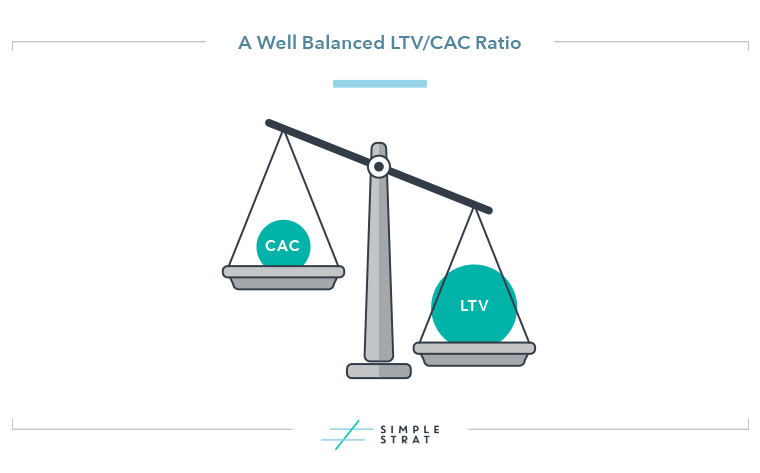
Once you’ve determined how you’re charging for your product, it’s time to decide how to sell it.
B2B SaaS sales models: a key driver of SaaS growth
The right sales model for your SaaS product depends on how complex it is and how high you set your price. The more expensive or complex your product is, the more likely it becomes that you’ll need a higher touch sales model.
The following sales models complete a strategic matrix of approaches that balance price and complexity to best meet the customer’s needs during their purchasing journey:
- Self Service
A low-touch model that allows customers to purchase your product(s) online without talking to salespeople - Transactional
A model that generates leads through marketing efforts and closes a relatively high volume of sales with sales representatives assisted by automation - Enterprise
A high-touch approach that closes a lower volume of high-value deals through a more sophisticated sales strategy
Choosing a B2B SaaS sales strategy
The model you choose should support the interactions you need to have with your audience in order to meet their expectations and your goals.
A more complex product will require the involvement of a sales team that can answer questions and guide leads through the purchase process. A more expensive product also typically necessitates one-on-one sales conversations to address any questions or concerns a buyer has before they’re willing to part with that amount of money.
Your goal is to create the least amount of friction possible for your leads, while also ensuring that you’re providing them with the level of support they need during the sale. Choosing a well-fitting strategy can not only ensure a successful operational framework, but it can help you create a satisfactory customer experience and establish a plan for future growth.
As you can see in the matrix graphic, you want to avoid selling low-cost products that are complex. You’ll simply never be able to earn enough value from customers to justify the amount of resources you would spend on a high-touch sales process. If you find yourself in this situation, it will be necessary to find ways to increase your price and/or reduce complexity.
Each model has unique implications for your business. For example, a higher touch approach will typically involve a longer sales process and increased customer acquisition costs. Self-service sales will require strong marketing and excellent self-guided onboarding.
The model you choose should also guide how your sales and marketing teams work together. An enterprise sales model will rely heavily on your sales team, with marketing efforts focused primarily on awareness and sales enablement. On the other hand, a self-service model relies almost completely on marketing, with the sales team only focused on large accounts or account expansion (cross selling and upselling).
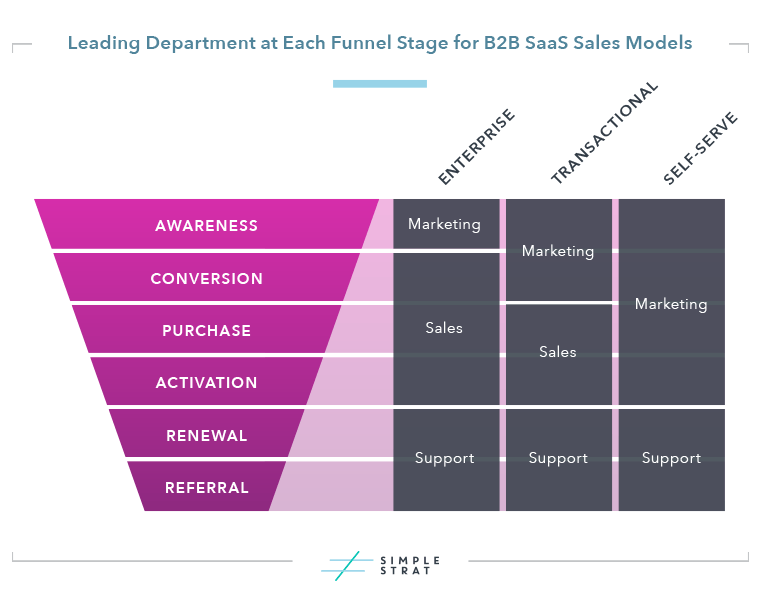
The truth is, choosing the right sales model can be challenging. It’s part art, part science and your final approach may use a combination of options.
PRO TIPS:
How do you move SaaS customers to buy?
- Encourage prospects to sign up for a free trial or live demo
- Pinpoint the moment free users make a purchase and create a marketing campaign to get them to that point faster
- Discover what is stopping your free userbase from converting to paid customers and eliminate those obstacles
- Remind customers of expiration dates, ask them for renewals, and prompt them for updated payment information before it expires
- Optimize your pricing strategy often
Retention: Why Managing Churn is Critical to SaaS Success
The number one success indicator for SaaS companies is to retain customers. There is probably nothing we work harder to achieve or talk about more.
Why do SaaS customers churn?
The first step to managing churn is to recognize its source. Often, it’s one of more of these reasons that often cause customers to churn:
- A buggy or unstable product
- Inadequate or unrealized product value
- Low adoption or usage rates
- Selling to the wrong type of customer
- Unoptimized pricing and packaging
- Delinquent credit card information
As you can see from the list above, one of the biggest causes of churn is not meeting customer expectations. But you’ll need more detail about what’s causing your churn before you can fix it. This can be difficult at first, but if you are gathering churn insights — through in-app data, exit surveys, and/or follow-up emails — you can begin to understand why your customers are leaving.
But why go through all that trouble? First, it’s cheaper — and more profitable — to retain customers than to earn new ones. And, churn is a good leading indicator for your company’s ability to generate new sales through word of mouths and referrals.
A happy customer base sticks around, and that is great for your bottom line.
How do you calculate churn?
For SaaS companies, recurring revenue is really important. Knowing how much money you can count on in the future makes your company more stable and your future more predictable.
Many factors can affect your recurring revenue, including the net flow of customers and dollars in your business. When calculated, this number is often normalized to either a monthly or yearly period and subsequently used in the calculation of many different performance metrics.
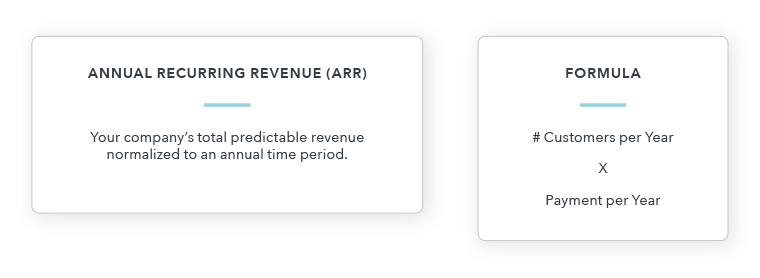
To understand your churn rates, you first need to understand the amount your current customers are spending and the ratio of customers you are gaining and losing. Because of this, both revenue churn and customer churn are important metrics to track.
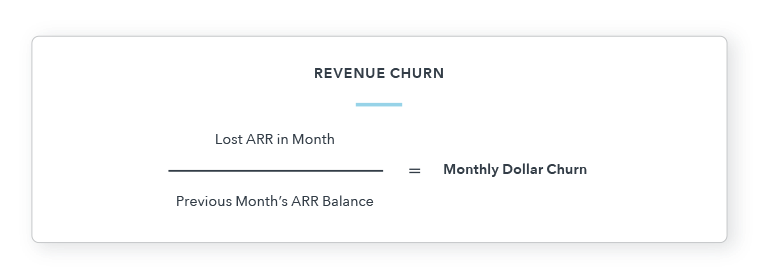
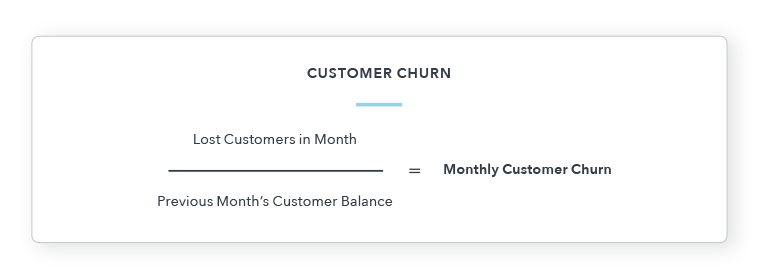
To get the complete picture of your revenue, however, you must also track the value of your bookings — new, expansion, and downgrade. When calculating your bookings include the following criteria: new contracts, renewals, upgrades, add-ons, downgrades, and churned MRR.
Together, these numbers — revenue churn, customer churn, and bookings — give you a complete picture of your business’ churn.
Can you predict customer churn?
In general, having a high churn rate is an indicator that something in your business is not going according to plan. The opposite is true if your churn rate is low.
Because churn plays such an important role in a SaaS company’s success, many organizations try to predict it by implementing customer engagement scores and spending time assessing the results of their Net Promotor Score® (NPS®) survey.
Engagement Scores
To calculate an engagement score, companies must discover which of its features are used by their stickiest customers. By assigning a value to each of the features and tracking the usage habits of customers, you can begin to predict which ones are most likely to churn.
The benefit to taking this approach is that by evaluating the customers who actually churn, the same data can be used to validate that the features you believe drive retention truly do.
NPS
Customer satisfaction is an indicator of churn in many industries. For SaaS companies, NPS results can help you find patterns in customer responses that allow you to address specific parts of your business model. And, because the surveys are universal, your results can be directly compared to your competitors, which could reveal other important considerations.
What do you do with this information?
At the end of the day, what you learn about your churn rates through cold, hard data can only get you so far. That, combined with the qualitative information you see your engagement scores and NPS data are what will really help you reach SaaS marketing success.
If you are using the information you gather to make smart decisions and addressing the red flags as they arise, putting out a product that your customers will love will be easy. Just don’t forget how important your support team is in this effort. If you pair and excellent, continuously improving product with a customer service experience they won’t soon forget, your software will sell itself.
PRO TIPS:
How do you improve SaaS retention?
- Provide proper onboarding and opportunities to better learn the benefits your product delivers
- Set realistic expectations and build trusted customer relationships
- Address known causes of churn; know what your customers like, improve upon what they don’t like
- Maintain a high touch frequency and get personal with your communications
- Prove your value and offer solutions when things go wrong
Conclusion
The marketing funnel can be a helpful framework as you look to build or optimize a B2B SaaS marketing strategy.
- Begin with a thorough understanding of your customers and let those insights drive your decisions about your messaging and marketing channels.
- Continue to optimize your pricing and ensure that you have the right sales model for your level of complexity and price.
- Focus on learning as much as you can about why your customers churn, and fix those issues regularly.
While these three steps are simple to describe, they’re difficult to perfect. But when you do get them right, hang on tight because you’ll be amazed at how fast you can grow.
